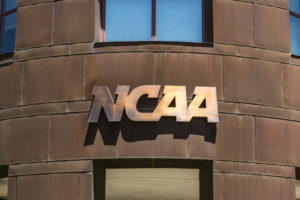Two years ago, I wrote an article for the injury board blog titled Bad Habits Have Been Formed, Addictions Are Set, Technology Is Needed. Two weeks ago, the National Transportation Safety Board recommended a ban on "the non-emergency use of portable electronic devices for all drivers" in all 50 states.
During the past two years, 35 states in the U.S. have passed laws banning texting while driving. Yet, according to the National Highway Traffic Safety Administration, the number of driver's texting behind the wheel has increased by 50%. Why? How can this be? The answer is quite simple really. Bans (although better than nothing) are not even close to the best answer to prevent cell phone distracted driving or any other cell phone related problem.
Addictions and temptations to the cell phone are so great, bans have little if any effect. Clinical studies have shown use of the cell phone creates a dopamine squirt thereby causing a Pavlovian Impulse giving the user instant gratification and the desire to automatically reach for the device whenever and wherever it rings, buzzes or lights up. Neuro-imaging studies have shown texting individuals have the same area of the brain light up as an addict using heroin. And still other studies are claiming the phone elicits an OCD type behavior. Couple this with the fact that kids are now getting phones on average at age ten. By time they learn how to drive, these young adults are well entrenched in the unstoppable behavior. What's worse is the kids are not the worst offenders. Soccer moms and executives are. There's a reason why the Blackberry is often referred to as the Crackberry?
Cell phone distracted driving has become a disease of pandemic proportions. According to the World Health Organization, cell phone distracted driving is now costing the top ten developed nations between one and three percent of GDP. On the high end that means the U.S. is flushing almost a half a trillion dollars per year down the drain. Even on the very low end of 150 billion dollars per year, we should be doing everything possible to eliminate this problem. Shouldn’t we? Hello… anybody on the Super Committee reading this?
Whose paying for all this? The answer is we all are, well at least some of us considering 56% of the people pay 90% of the taxes in the U.S. Many people believe that’s what insurance is for. They’re wrong! Sometimes dead wrong! The reality is insurance pays but a fraction of the true cost of these accidents.
Think about it for just a second and please don’t forget about the 25% of uninsured drivers on the road every day. Normal costs associated with an accident may or may not include property damage, loss of wages, and medical bills. What’s often overlooked is the cost of fire and police dispatch, cleanup, increased insurance rates, funeral costs, disability costs, and loss of life not to mention the cost of incarcerating the offending driver (often young teens). What value does that carry? What about vehicle replacement “time value”? I’m not talking about the car itself, I’m referring to the time it takes to replace the car. If the new car buying experience takes thirty hours on average, what value does that carry and who suffers the cost? Is time really money? If so, consider this:
One accident on any major interstate that blocks traffic and delays the work force for just one hour each week into any major city has the ability to cost that city millions of dollars. The sheer magnitude of the cost of productivity loss is enormous. Think about the small business owner who employs 100 people and feels the pain of 20 employees arriving late each week. This loss of employee productivity adds up very quick. This alone could throw low margin companies into the red causing notes to be called due, especially during recessionary economies. Taking it one step further, the cumulative effect could cripple a major city. Any way you view it, loss of time means loss of productivity which means loss of revenue, loss of wages, loss of tax base, and loss of family and societal harmony. Can you put a realistic value on that? Initially, on the surface this may seem a bit far reaching and difficult to grasp. But once you really dig in or better yet fall victim to the problem not once but four times as I have, the extent of the problem and the need for a solution becomes vividly clear.
Senator Jay Rockefeller, Chairman of the U.S. Senate Transportation Committee, got it right two years ago when he said he sees the solution as phone blocking technology that knows the difference between a driver's phone and the passenger's phone. Technology is the right answer, but not just any technology. Cell phone problems go much deeper than just distracted driving.
Prison officials are now claiming the cell phone to be the number one item of smuggled contraband. Jailed criminals and terrorists enjoy secret communication almost whenever they want. Last year, California prison officials confiscated nearly 11,000 contraband cell phones. Even notorious criminal Charles Manson and jailed terrorist Abu Bakar Bashir were recently caught with smuggled cell phones. Senator John Whitmire of Texas had a hit put out on his family that was traced back to a cell phone found in a maximum security prison in Colorado. Literally hundreds of thousands of illegal activities are orchestrated every day on cell phones inside prison walls. Bribery, fraud, extortion, drugs, kidnapping, and hits are daily occurrences made possible from smuggled contraband cell phones. In a recent report to Congress, the CTIA disclosed more than 216,320 illegal text/cellular phone call attempts were made in less than one month from inside one single prison in Mississippi. Can this societal cost even be calculated?
Schools are also experiencing troubled times because of the cell phone. Cyber bullying, cheating and classroom disruption has become a daily disturbance in many institutions. Because of this, more than 90% of districts have instituted strict disciplinary policies. Many educators freely admit the policies are failing badly. A recent two week email campaign conducted by Try Safety First asking educators to sign a petition to Congress to mandate cell phone problem solving technology for the classroom generated more than 4,000 letters and emails to Congress.
As many of you attorneys know, court rooms have also become a serious area of concern in relation to cell phones. As evidenced by recent articles, several high profile judges are speaking out on the topic and looking for a solution. Witness tampering and jury box malfeasance is becoming a common occurrence manipulated by cell phones. One such juror in a big federal drug trial in Florida admitted that he had been doing research on the case on the Internet, directly violating the judge’s instructions and centuries of legal rules. Yet even more shocking, when the judge questioned the rest of the jury, he discovered eight other jurors had been doing the same thing.
As if this isn’t enough, a recent ABC news report cites Boeing’s lead safety expert as providing evidence some of the new cell phones can definitely cause cockpit interference exceeding acceptable levels. How does that make you feel? How many people do you think really turn off their phones completely when in flight? Other cell phone problem environments often in need of overriding on/off switch technology include Hospitals, Churches, Theatres, High Security Areas and our very own homes.
So with all these problems in all these areas in need of a solution, what's the answer? Is there a single comprehensive remedy for all of these problems? The answer is YES. It’s called Protocol “Safety Valve” Technology and it’s actually quite simple.
Protocol “Safety Valve” Technology is a simple set of software safety instructions. The instructions provide an optional safety valve (similar to an on/off switch) inside the phone to automate phone behavior when in a specified environment. Installed in a corresponding safety environment will be housed a limited range trigger sensor which can send a signal to the phone when necessary. As such, all phones will understand exactly how to behave when in a safety required or distraction prevention environment.
Examples: An automated trigger in an automobile could be the vehicle’s transmission coming out of park and the environment might be one meter around the driver’s seat allowing all passengers full use of their phones. Other triggers could be an operational on/off switch for teachers, judges, pilots, movie theatre owners and the like permitting phone usage during certain periods and sleeping the phone when in session. Emergency 911 and two additional emergency numbers always remain active. In essence, an optional operational limited range safety valve is created inside each phone.
But, there is one small catch. Well, many of you reading this may think it’s not so small. But I do in comparison to the overall societal benefits to be achieved. The catch is this: Protocol “Safety Valve” Technology will require either government legislation or an FCC regulation for perfect performance.
The need for legislation or regulation is because there are more than 650 different makes and models of cell phones combined with open, closed and partially closed configurations. Regulation will insure manufacturer compliance to include the software protocols thereby establishing a new industry safety standard. It will be the first of its kind in the wireless industry. The protocols will be embedded into the firmware of all handsets manufactured. As such, all phones will uniformly understand exactly how to behave when in a safety related or distraction prevention environment. In essence, an optional safety valve is created inside each phone.
Once the regulation is passed, each state will then vote to decide which protocols if any and what level of inhibition to activate. For instance, California may vote to permit hands free only when behind the wheel whereas Nevada may only prohibit texting behind the wheel. The phone will understand when it crosses into the next state and how to behave according to the laws of that state.
Protocol standardization is the only real way to effectively eliminate ALL cell phone problems to provide parents, teachers, wardens, judges, pilots, public transportation officials, and business owners an optional tool to easily eliminate their respective wireless problems. And the cost? Just pennies.
I know many of you are already saying not another regulation, not more big brother, not another nanny state. In fact, I’m often asked, isn't this just a little too much government intervention in our lives? I would like to state for the record in nearly all circumstances I am clearly on the side of smaller government and personal responsibility. Unfortunately, there are times in life when human behavior finds a way to cast a shadow of darkness so severe that we must act to prevent collateral damage. Sometimes real problems just need real solutions. This is one of those times. If we don’t solve this problem, we can simply keep piling on the debt and the problem will continue to exacerbate. Simple bans are equivalent to sweeping the problem under the rug. That only leads to needing a bigger rug.
It is imperative that we understand use of a cell phone is not a right, but a privilege. We must respect it for everything that it is and realize we are not somehow magically immune to its dangers. The cell phone is much greater than a simple toy capable of doing some really cool things. I think the cell phone may be one of the greatest inventions ever, but please understand it was never envisioned to be smuggled contraband, facilitate massive cheating and disruption among students, cause an accident every 47 seconds or be a terrorist bomb trigger. The simple reality is the cell phone has quickly become the key ingredient in many disastrous recipes and we must not let good judgment be overtaken by our addiction for these cool gadgets. The cost and destruction caused be these problems can no longer be ignored.
With 5.5 billion active cell phones in the world and many countries on the brink of financial disaster, I believe protocol technology is likely to be making its way across the globe very soon. Brazil has already moved in this direction. On Oct. 20th, 2011, Brazilian Congressman Newton Cardoza championed bill PL 2482-2011 in an effort to mandate protocol technology. On Nov. 5th, the bill became registered in the Brazilian Congress, moved into the commissions and was given PRIORITY status.
For more information on Try Safety First Protocol Technology or to join Try Safety First in their quest to create a global standard, CEO John Fischer can be reached at john.fischer@trysafetyfirst.com.
Website: http://trysafetyfirst.com










2 Comments
sanpatrice
Some day there will be a class action suit brought against cell phone makers and service providers. A few years back there was a law suit in which the manufacture was sued. The judge basically said that since there is no way to prevent cell phone use while driving, its totally up to the driver. Now of course there are companies like zoomsafer, stoptxting.com, location labs and others that provided anti texting technology. If cell phones came off the shelf with this technology in it there would be lot fewer accidents. So if a cell phone maker or service provider finds them self's in court, a judge could no longer say there is no cost effective to make the phone safe.
Think about set belts in a car. You can not buy a car without set belts. Why, not because they save lives, but because if the auto manufacture makes a car without a set belt, and someone is hurt in an accident, the manufacture is toast for not providing a simple cost effective device to make it safer.
Mark my words , some attorney is going to start a class action and you will see set belts on cell phones once that happens
Dan
Nice idea, but this won't solve the problem. We already have numerous examples of this type of solution in GPS's that defeat controls when cars move or various schemes in cell phones to restrict usage. Both have created an entire "jailbreak" industry where hackers market their solutions to defeat these measures.
The better solution will be to enable people to use these systems safely. Handsfree systems in cars is a good first step. Audio/verbal solutions to texting are needed... maybe even a HUD (heads up display) as is already widely used in aircraft.
Enabling safe use (the carrot) while enacting tough sanctions (the stick) might have a chance of working. Restrictions on use will no-doubt have some affect, but I believe will ultimately fail.
The issue you raise with prisons and the classroom is a very different issue and likely demands a different response. Carriers already have ways of distinguishing traffic from phones in an area; these could be used to allow/disallow usage within these environments.
IMHO
Comments for this article are closed.